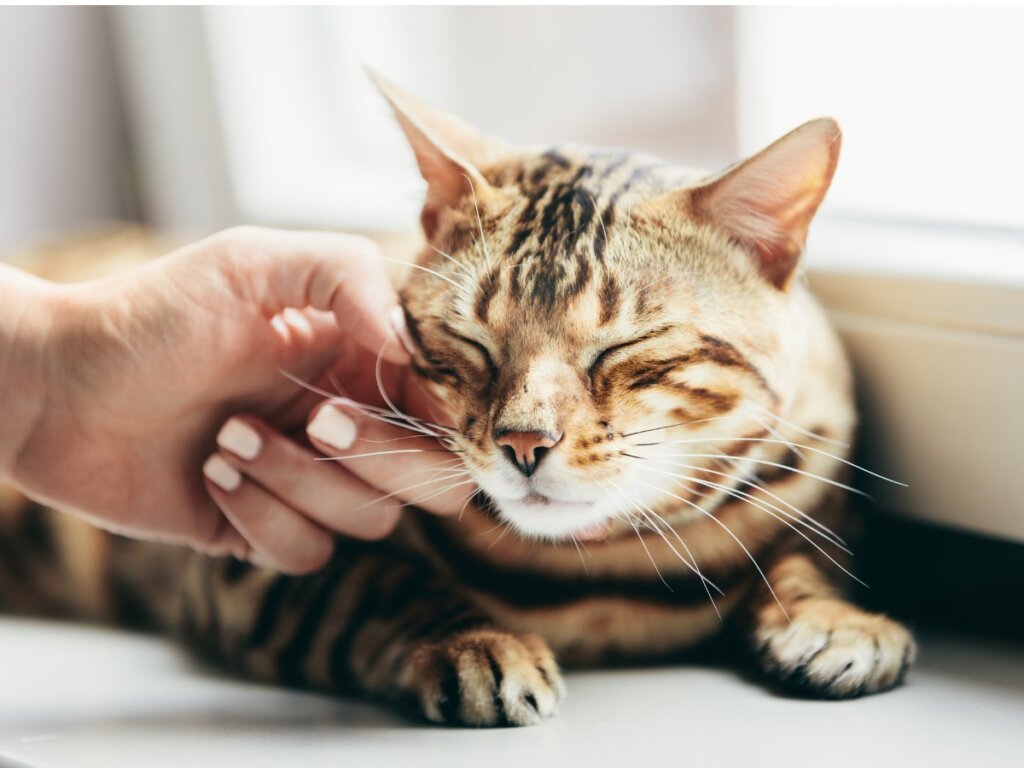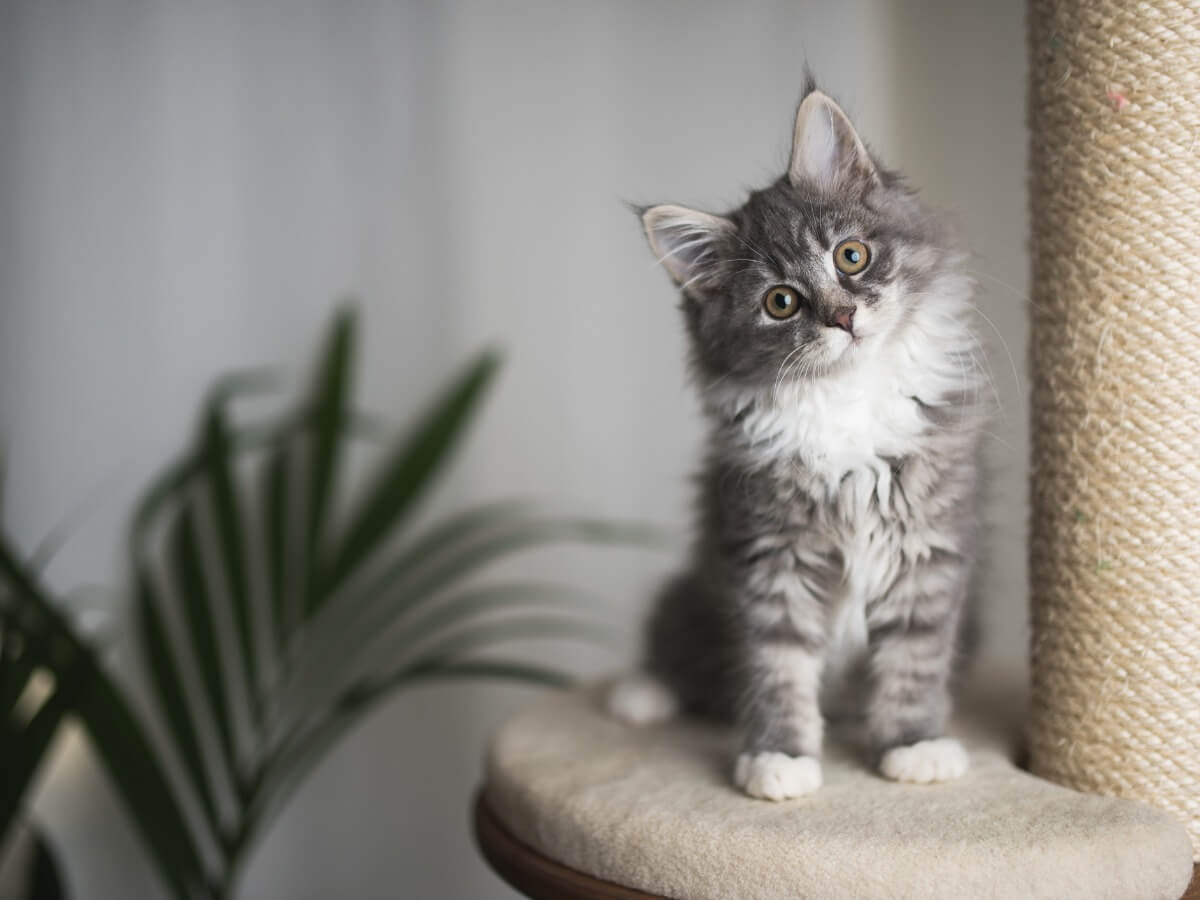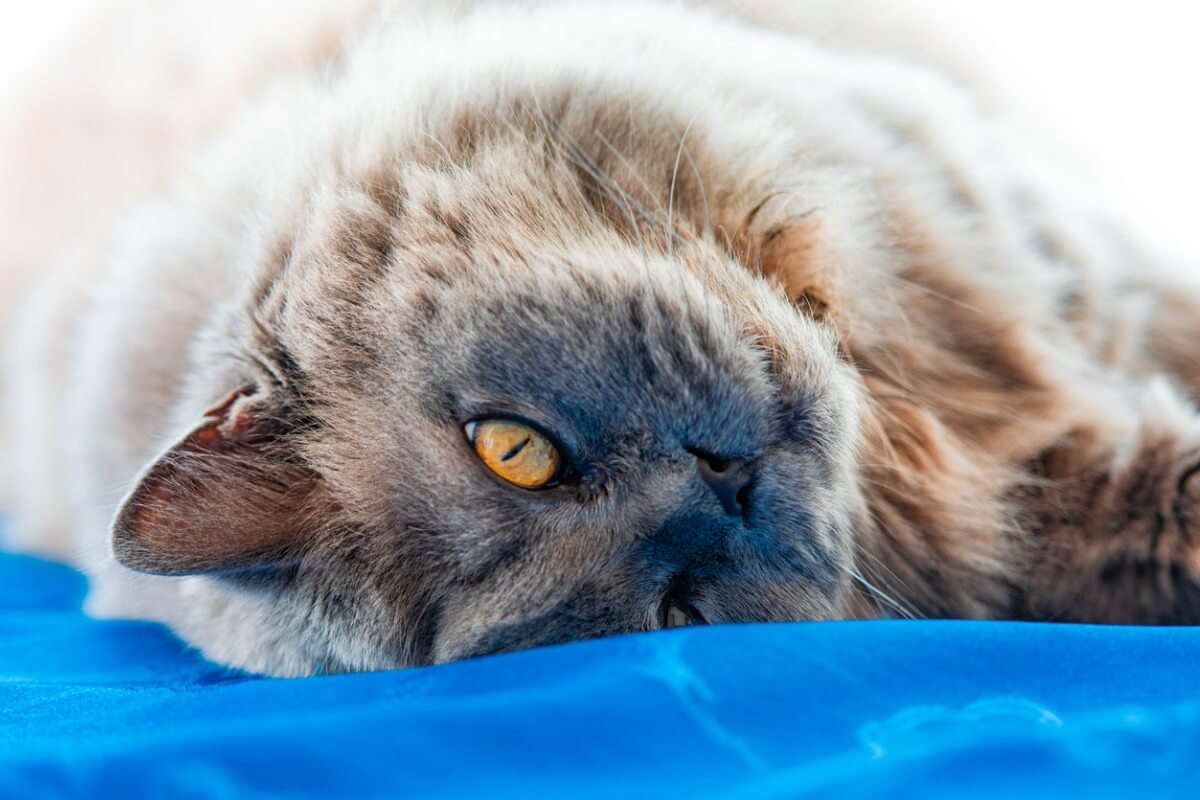Why Doesn't My Cat Purr?

One of the most characteristic features of cats is their ability to purr. This sound is frequently associated with a cat’s feelings of tranquility, joy, and calm towards its owner. However, when the cat doesn’t purr, owners are often concerned. It can create worries about the cat’s health and state of mind.
In contrast to what people often think, it’s important to understand that the cat’s purr isn’t their only form of communication. As a species, cats have different behavior patterns to express their emotions and, as individuals, each of them has different habits. If you want to know more about the subject, keep reading.
How does my cat purr?
The purr of the cat can be explained as a soft, constant snoring that’s always accompanied by a vibration. The latter is more intense in an area of the neck, because, according to one of the most widespread theories, the purr originates in the cat’s thorax, especially in the muscles of the pharynx.
When a cat inhales and exhales, its blood is compressed —as it passes through the diaphragmatic hiatus— and its bronchi fill with air to amplify the vibration.
Beyond physiological mechanisms, what science has proven is that the cat’s purr generates a release of endorphins. This chemical phenomenon translates into a state of mind related to the cat’s happiness.

When does purring start in cats?
When kittens are born, it only takes 2 days for them to emit their first purr. This form of communication is very common while kittens are breastfeeding, where they support their front legs to stimulate the flow of milk. On the other hand, this sound is used by kittens to express almost all types of feelings, from pain to fulfillment.
This sound also helps cats to heal when they have certain ailments or illnesses, and there are even theories that claim that the cat’s purr can be used in therapies with humans to reduce stress, anxiety and treat depression. It seems certain is that the owner’s caresses will always cause a cat to purr, but, sometimes, this isn’t the case.
The meanings of a cat’s purr
As we mentioned earlier, your cat’s purr can signify relaxation, happiness, and well-being. In contrast, cats can purr to convey their discomfort with a possible illness or to release stress, and so it’s common to hear cats comfort themselves with this act.
In addition, it’s important to clarify that purring doesn’t only occur in cats. There are wild relatives – like the bobcats and lions – that also emit a series of purrs. Regardless of the species of cat, purrs can have different frequencies and intensities, which could be a form of request from the pet to its owner.
Reasons why a cat doesn’t purr
The erroneous correlation that is generated when considering this act as a sign of happiness is the cause of concern when the cat does not purr. However, this situation is not alarming and only the reasons why a cat does not emit this particular sound and vibrations should be known.
Each cat is different, and their personality is the main factor that determines whether they’ll purr or not. Here are some ‘types’ of cats based on these claims:
- Cats with an inaudible purr: This is a purr that some cats have. The sound is so low that it can only be heard if the owner gets close enough to the animal. By sticking your ear to their body or putting your hand on their neck, you can feel the vibrations.
- Cats that stop purring: A cat’s identity and behavior vary over the years. Because of this, a feline may stop purring, just as cats that don’t purr may suddenly begin to purr. However, if your cat doesn’t purr after a big change in their life – such as a move – then you should go to the vet.
- Cats that don’t purr in any way: This behavior is due to the cat’s character, and isn’t linked to any sort of disease or condition. Each cat chooses the form of communication that’s most comfortable to them, through which they’ll express their feelings and emotions without a problem.
Cats that don’t purr but rub themselves
Another form of communication for a cat that doesn’t purr is to rub against a part of their owner. They’ll usually do this with their owner’s face, hands, or legs, which are often the most accessible parts to them. This behavior causes the feline to release endorphins and mark their owners with their characteristic smell.
Cats that don’t purr but bite and meow
Another of the most recognized sounds in cats is their meowing. With these, they seek to convey to their owners a request or a specific feeling. Similarly, cats that don’t purr may express different feelings through play or warning bites. Here are some examples:
- Attention meows: Specific requests by the cat for petting or feeding.
- Loving bite: A cat can catch some part of its owner’s body with its teeth – such as a finger or the nose – to express its love without doing harm.
- Meowing to leave or enter: A cat does this when it wants to go outside, or come in after a walk.
- Play bite: Due to the cat’s predatory nature, it’s normal for your pet to bite when they’re playing. This behavior helps the cat to regulate its jaw strength.

As you have seen, the fact that a cat doesn’t purr doesn’t mean that it has some physical problem or that it’s a sign of some disease. It’s important to pay attention to your pet’s character and behavior, and to see a vet if your cat suddenly stops purring.
All cited sources were thoroughly reviewed by our team to ensure their quality, reliability, currency, and validity. The bibliography of this article was considered reliable and of academic or scientific accuracy.
- Albarracín, R. del Trabajo:¿EXISTEN EN LOS GATOS DOMÉSTICOS DIFERENTES TIPOS DE RONRONEO?. Applied Animal Behaviour Science, 64, 193-211. Recogido el 8 de junio de 2021 de: http://scait.ct.unt.edu.ar/pubjornadas2010/trabajos/299.pdf
- Romero Raza, E. G. (2015). Correlación entre personas diagnosticadas con ansiedad que interactúan con animales domésticos y un grupo control (Bachelor’s thesis, Quito: UCE). Recogido el 8 de junio de 2021 de: http://www.dspace.uce.edu.ec/bitstream/25000/7055/1/T-UCE-0007-200c.pdf
- Sissom, D. E. F., Rice, D. A., & Peters, G. (1991). How cats purr. Journal of Zoology, 223(1), 67-78.
- von Muggenthaler, E. (2001). The felid purr: A healing mechanism?. The Journal of the Acoustical Society of America, 110(5), 2666-2666.
